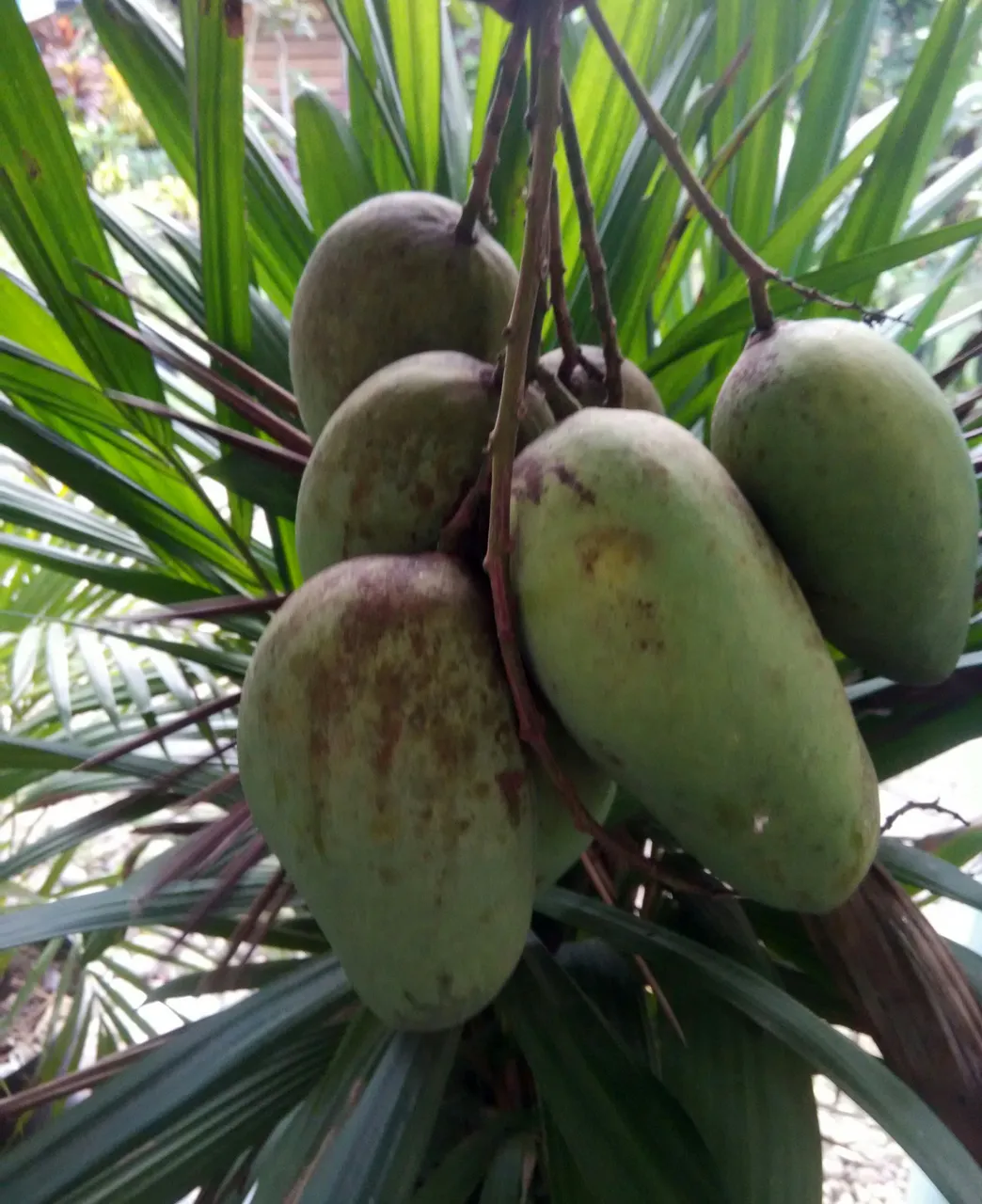
Mango or Diving is the name of a kind of fruit, as is the name of the tree. Mango belongs to the Mangifera clan, which consists of 35-40 members and Anacardiaceae tribe. Its scientific name is Mangifera indica. This name roughly means: "(the tree) that bear fruit of mango, originating from India".
Mango trees include high-level plants whose stem structure (habitus) belongs to the arboreus group, ie woody plants having a stem height greater than 5 m. Mango can reach a height between 10 to 40 m.
The name "mango" comes from Malayalam maanga. This word was brought to Europe by the Portuguese and absorbed into manga (Portuguese), mango (English) and others.
Originating from the area around the Indian border with Burma, mangoes have spread to Southeast Asia at least since 1500 years ago. The fruit is also known in various regional languages, such as pelem or poh.
Large mango trees, can reach height 40 m or more, although most mango pet only about 10 m or less. Mango stems erect, branched slightly strong; with dense leaves forming a beautiful dome-shaped, oval or elongated headboard, with a diameter of up to 10 m. The bark is thick and rough with many small cracks and scales of leaf stalks. The color of old pepagan (bark) is usually grayish brown, dark gray to almost black.
Mango roots riding that branches, very long to reach 6 m. The branch roots are getting down the less, at most root branches at a depth of approximately 30-60 cm.
Single leaf, with scattered location, without leaf leverage. The length of the petiole varies from 1.25 to 12.5 cm, the base is enlarged and on the upper side there is a groove. The leaf position of the stem is usually 3/8, but it is closer to the end, so it is closer together so it seems like in a circle (rosette).
Leaf blades are varied but mostly jorong-shaped to lanceolate, 2-10 × 8-40 cm, slightly clay like leather, dark green glossy, spiked with a wavy edges and a pointed tip, with 12-30 secondary leaf bones. Various forms of mango leaves:
It is tapering and the tip is like a spear.
Shaped oval, pointed tip like a spear.
Rectangular, but pointed end.
Rectangular, rounded edges.
Young leaves are usually reddish, purplish or yellowish; which will subsequently change on the upper surface to a shiny green, while the lower surface is light green. Leaf age can reach 1 year or more.
Flowers Edit
At home one (monoecious), the mango flower is a compound interest composed in many branched shoots at the tip of the twig. The wreaths are usually hairy, but some are also bare, greenish yellow, up to 40 cm in length. This compound consists of a major axis having many main branches. Each of these major branches has many branches, the second branch. It is possible that this second flower branch has a group of 3 flowers or has three branches. Each group of three flowers consists of three flower buds and each short-stemmed petal with a small leaf. The amount of interest on each compound interest can reach 1000-6000.
The flowers in the mixed arts, there are male and some are hermaphrodites (androgynous). The size of the flower is approximately 6-8 mm. The male flower is more than the hermaphrodite flower, and it is this hermaphrodite flower that determines the formation of the fruit. The percentage of hermaphrodite flowers varies, depending on the variety, ie between 1.25% -77.9%; while those with normal fruit will be approximately 5-10%.
Mango flowers are usually short-stemmed, rarely long-stemmed, and smell nice. The petals are usually in 5's; as well as the flower crown consists of 5 leaves of flowers, but sometimes there are 4 to 8. The color is pale yellow, while in the middle there are 3 to 5 lines of arise that are slightly old color. The edges of the crown of the crown are white. At the time it will wither, the color of the crown flower becomes reddish.
5 juice stamen, but the fertile one or two while the other sterile. The fertile yarns are usually almost as long as the pistil, which is about 2 mm, while the sterile is shorter. The pistil is reddish and will turn purple when the sari head opens to allow adult starch to pollinate the pistil's head. The form of pollen is usually round, about 20-35 microns long.
The fruit will not be stalked and contained in a room, and located on a dish. Pistil stalks start from the edge of the fruit and the tip is a simple pistil head. In a flower there are sometimes three fruits.